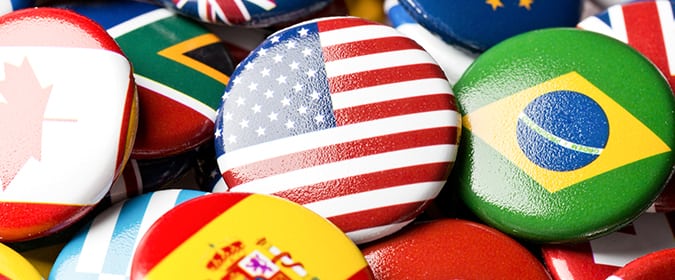
“Democracy dies in darkness” may be the tagline for The Washington Post, but it’s also a fact that the Center for International Media Assistance (CIMA) works to highlight with its aid to media development around the world. On Tuesday, CIMA and the National Endowment for Democracy (NED), in partnership with AidData, presented findings from a new report on what’s been done to fund the fourth estate around the world.
The report, “Defending Independent Media: A Comprehensive Analysis of Aid Flows,” looks at how much money is being funneled into media development across the globe, and how that money is being spent.
Report author Mary Myers noted that among the unique data points in the report was a sharp decline in aid to media development projects in 2015. Aside from that one anomaly, “donors are holding steady on their vocal commitments to the media.” Unfortunately, among aid spending, media development still accounts for only 0.3 percent of all aid. In dollars, that means that of the nearly $3 billion that goes to aiding development around the world each year, $450 million goes to media development — a small amount comparatively, but still incredibly significant.
When media is supported, though, it’s largely because of “the public service function of media,” Myers said. Fledgling and developing democracies are the most in need of media aid and donors see the value media brings to the public.
“Countries that are trying to hold on to democracy are doing so by the skin of their teeth,” said Mark Nelson, senior director of CIMA. This difficulty led, several years ago, to a “crisis” in media development aid, as donors were having a hard time seeing results and felt that contributing to media projects was becoming “too political,” Nelson added.
Aid is returning to the media sector, however, because of the desire to spread democracy. “The demand for strong institutions is outstripping the supply for media development,” said Samantha Custer, the director of policy analysis for AidData. At this time, donors are “not yet connecting the value of a strong media to helping [build democracy],” Custer continued, but as that connection becomes clearer, the hope is that aid to media development will increase as well.
Another problem for media development aid is that donors want to be able to see what they’re getting for their hefty donations. But many of the countries in need of a stronger independent media struggle to get funding because it’s harder for donors to see results. Many of the most media-poor countries also suffer from having oppressive governments that make it incredibly difficult for donors 1) to contribute, since most of the funding passes through the government, and 2) to see results, since it’s much harder to travel in and out of the countries and develop on-the-ground relationships with the media professionals being funded.
Part of increasing media funding involves creating an environment conducive to media growth. Brian Joseph, NED’s vice president of programs, said that donors need to ask, “Are we funding an infrastructure that allows a free press to flourish?”
“Most donors tend to go where it’s easiest to work,” Joseph noted. “The most repressive countries require a different kind of institutional DNA.”
That difficulty in gaining access and trust explains why countries like North Korea, Eritrea and Iran — which have some of the lowest press freedom scores in the world — receive significantly less funding than countries like Sri Lanka, Indonesia and Burma. While all are ranked poorly for their press freedoms, it’s possible for donors to get to Burma and see the work they’re supporting, and it’s relatively easy to build relationships with the media organizations working there. North Korea, on the other hand, presents an impossible challenge, with entry to the country so difficult, and exit not guaranteed.
It’s also important to note that while some countries receive ample funding for media development, that aid isn’t always reaching the poorest regions, or the regions most in need of journalistic coverage. But as Nelson pointed out, there’s a difficult question here: “How do you support change in a country that has a really repressive regime?”
“Money doesn’t buy you policy change,” Myers noted, explaining why funding often misses the mark. “Donors can also use diplomatic clout [to support the media].”
This struggle to develop a free and independent media around the world is something many in the U.S. news media industry can relate to. Local news in the U.S. is becoming a product of independent and nonprofit organizations seeking to provide the same public-service journalism to citizens here that groups like NED and CIMA help to fund overseas. By learning from the data about how international media is sourcing and utilizing media development funds, it’s possible that local U.S. media can learn a few things about how to attract income and audience as well.
